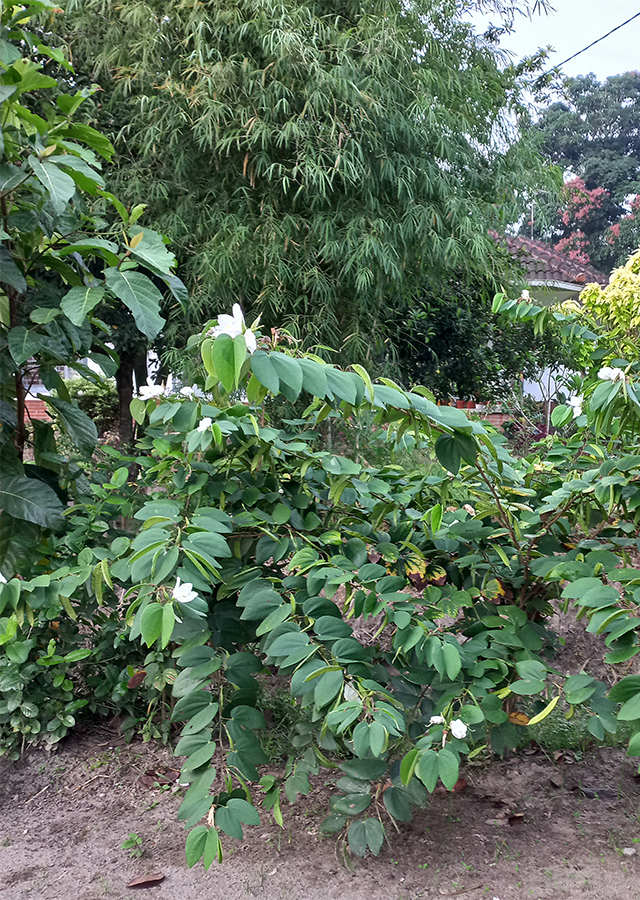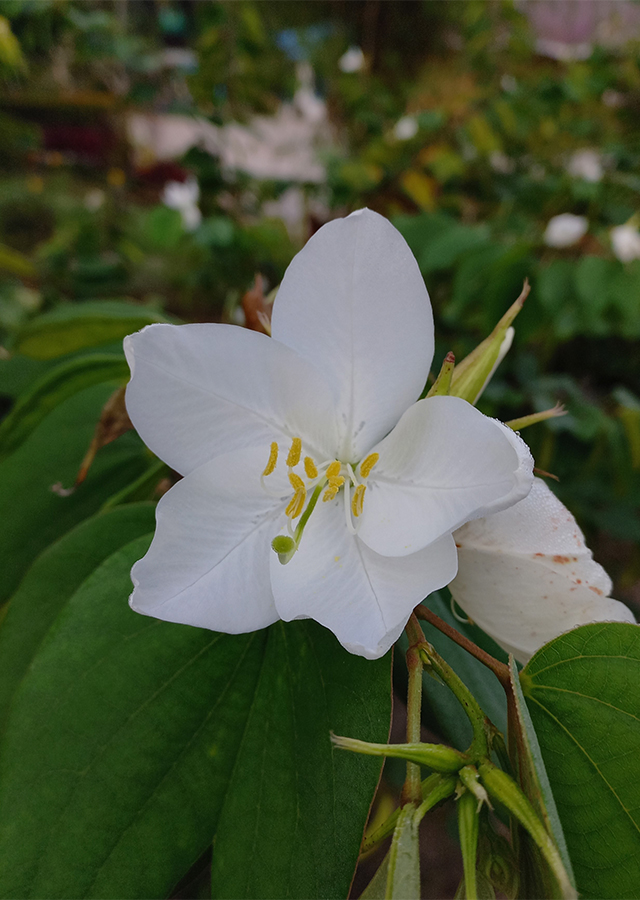Traditional Herbs from Bauhinia acuminata
asthma
- Take\u00a0the roots and bark of the white butterfly plant\u00a0then wash until clean.
- Boil the ingredients until boiling.
- Let stand until warm/cold.
- Strain and drink for sufferers asthma.
burn_wounds
- Prepare the roots\u00a0of the white butterfly plant\u00a0then wash them until clean.
- Boil the roots in coconut oil until boiling.
- Let stand until warm/cold.
- Apply on burnt skin.
What is Bauhinia acuminata Looks like??



Parts of Bauhinia acuminata that could be used
- Leaves
- Bark
- Flowers
- Roots
- Stems
Bauhinia acuminata Distribution
The white butterfly originates from the dry monsoon areas of the Southeast Asian continent, and the drier parts of Java, Kalimantan, the Philippines and Timor. Now, this species has been widely cultivated in Southeast Asia and Sri Lanka. People often plant this plant as an ornamental plant and hedge plant in tropical areas. Traditionally, the white butterfly is a plant that is trusted and used as an ingredient in medicine to treat various diseases. In Indonesia, the roots of the white butterfly are used by Javanese people to treat coughs and colds. In India, this plant is an important medicinal plant, one of which is a decoction of the leaves and bark used to treat asthma attacks. Based on research results, it was found that this plant has several pharmacological activities, including antimicrobial, anti-inflammatory, anthelmintic, antioxidant, anti-diarrhea, cytotoxic, hemolytic activity. However, this plant has been classified as 'Least Concern' on the IUCN Red List of Threatened Species (2011), due to habitat loss and degradation as a result of expanding human populations.Agroecology of Bauhinia acuminata
White butterfly plant can be found growing in well-drained, sunny sites on hillsides and plains, and in dry dipterocarp forests, especially in secondary formations, teak forests, and scrub. It grows well in full sun, but can survive growing in partial sun. Likes fertile, moist, well-drained soil, with slightly acidic soil acidity (pH) (5.6-6.5), does not tolerate salty conditions, and this plant can grow successfully in various types of soil.
Morphology of Bauhinia acuminata
- Taproot.
- Stem strong, upright, round, many slender branches, sympodial branching system, young twigs usually pubescent, bark greyish brown, rough, with transverse cracks and peeling.
- Leaves single, alternate (alternate), wide, ovoid and bilobed like a cow's hoof or butterfly wing, with an apical gap up to 5 cm deep, the upper surface (adaxial) is dark green and glabrous, the lower surface (abaxial) is light green, pubescent. The top of the lobe is sharp or pointed and the base of the leaf is chordate to rounded, the edge of the leaf is flat.
- Fragrant flowers, with five white crowns, the crown is elliptical to oval (oblanceolate ), glabrous. The stamens are approximately 10, yellow, and the stigmas are green. Compound inflorescences are in the form of racemes, sometimes there are 3 - 15 flowers in one raceme, located. in the leaf axils.
- Fruit pods, linear elongated, dark brown, glabrous, usually contain 5 - 12 seeds, fruit surface is smooth, glabrous.
- Seeds are slightly round (suborbicular), up to 7- 10 mm.
Cultivation of Bauhinia acuminata
Plant propagation can be done generatively (seeds).
Bauhinia acuminata, more details :
Chemical Content of Bauhinia acuminataAlkaloids, flavonoids, tannins, palmitic acid, three phallic acid esters, gallic acid, ursolic acid, essential oils (phytol, sesquiterpenoids ß-caryophyllene, caryophyllene oxide, α-humulene, isomethyl-α-ionone, α-farnesene, β-ionone, humulene epoxide, caryophylla-4(12),8(13)-dien-5α-ol, α-muurolol, α-cadinol, isoaromadendrene), phenolic compounds, saponins, glycosides, steroids, terpenoids, cardiac glycosides, kaempferol, quercetin, apigenin, a quercetin derivative (quercetin-3-glucoside).
Benefits of Bauhinia acuminata
Treats asthma, coughs and colds, headaches, hypertension, bladder stones, venereal diseases, skin diseases (including leprosy), burns, nasal ulceration, is thrombolytic (breaks up or dissolves dangerous blood clots in the blood vessels), cytotoxic, antidiarrheal, antibacterial, antimicrobial, anti-inflammatory, anthelmintic, antioxidant, and hemolytic.
Simplisia of Bauhinia acuminata
Another Facts for Bauhinia acuminata :
Synonym of Bauhinia acuminataBauhinia linnaei Ali, Casparia acuminata (L.) Heynh., Mandarus acuminata (L.) Raf.
Habitus of Bauhinia acuminata
Bush. Annual shrub, grows up to 3 m tall
Habitat of Bauhinia acuminata
- Forest
- Land
No comments:
Post a Comment